Menu
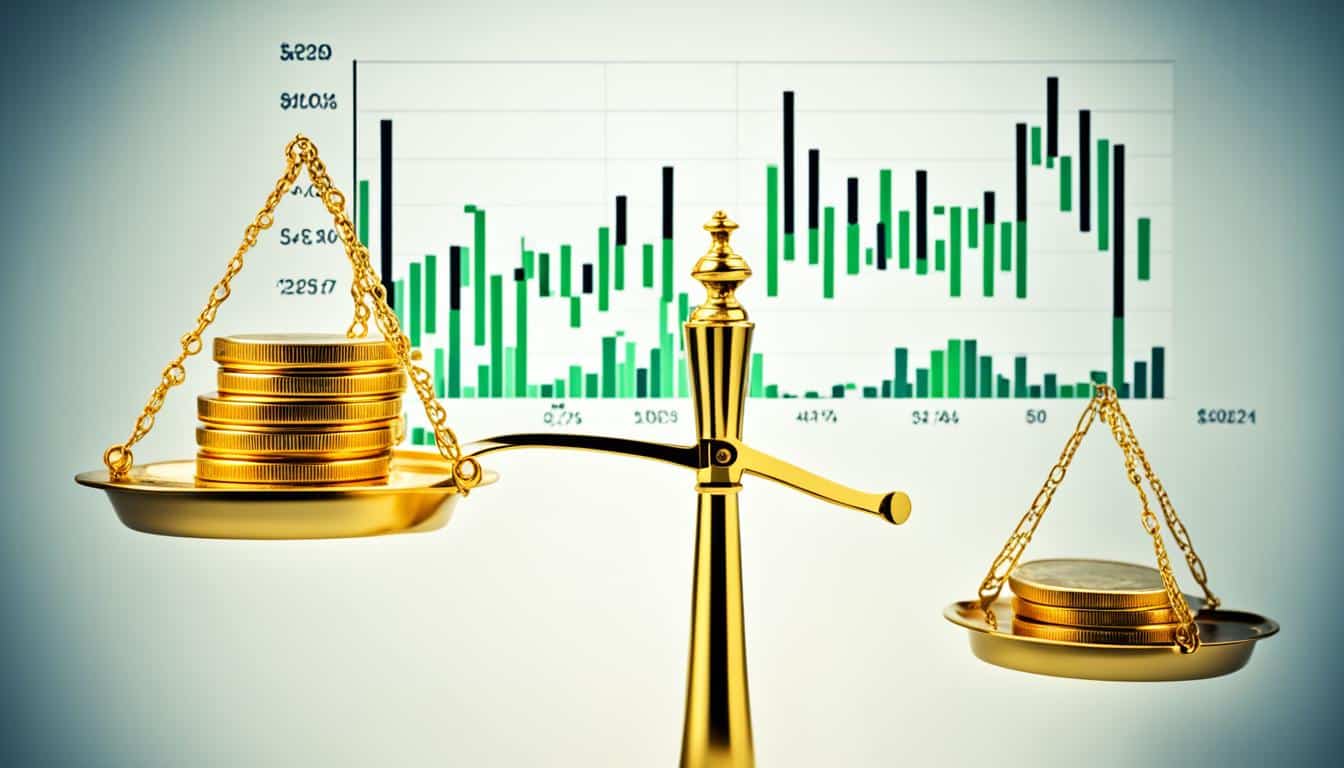
In commodity futures trading, investors usually put down only 10% of the contract’s value. This small amount lets smart traders make big gains with their money. For example, if the S&P 500 Index goes up by 20%, buying a futures contract could lead to a 100% profit. The use of leverage in commodity trading is indeed a big advantage.
When looking at commodity trading, it’s important to understand its unique benefits. The market is very liquid and simple to diversify in. With fewer types of contracts, traders can focus their investments. They might choose agricultural futures, energy futures, precious metals, or foreign exchange.
Commodity trading today has lower fees, making it more open to people. Short selling is as easy as buying, giving everyone the same chance to profit. But, success in this area comes from specialising. Many successful traders concentrate on just one market or type of trade.
Commodity trading stands out for its trend-following opportunities. Markets can stay in a bull or bear trend for years. Trading with these trends can significantly increase profits. In fact, trading with trends usually brings about 180% more profit than not following them.
Commodity trading lets investors make money from raw materials or futures contracts without actually owning them. It’s a wide field, covering agriculture, energy, and metals trading. This allows for a range of investment choices.
Commodity trading is about buying and selling raw materials or contracts. But there’s no need to handle the actual goods. This way, you can bet on price changes.
One big plus is the chance for high profits. Traders can make a lot from a small amount invested, thanks to leverage. They usually use about 10% of the contract’s total value.
Commodities fall into four main categories: agriculture, energy, metals, and livestock. In agriculture, think about corn, wheat, soybeans, and sugar. Then there’s crude oil and natural gas, with prices changing often.
Metals include precious ones like gold, silver, and industrial ones like copper and platinum. They’re valuable and in demand due to global economic changes and new technologies.
| Type | Examples | Characteristics |
|---|---|---|
| Agricultural Commodities | Corn, Wheat, Soybeans | Impact by seasonal patterns and weather conditions |
| Energy Resources | Crude Oil, Natural Gas | Daily price volatility |
| Metals | Gold, Silver, Copper | Valuable during market volatility |
| Livestock | Beef, Pork, Poultry | Driven by global food supply and demand |
By trading on futures, you can use leverage for more cost-effective investments. With platforms like CME Group becoming more common, it’s easier to get into the market. This has made energy, agriculture, and metals trading very popular.
To trade well, understand the market. Keeping up with market trends can lead to better profits. Successful traders know a lot about their chosen market and stick to a smart plan.
Trading commodities has several benefits. It can help with leveraging opportunities, make your investment diverse, and ensure there’s enough money flow in the market. All these are critical for a good trading strategy.
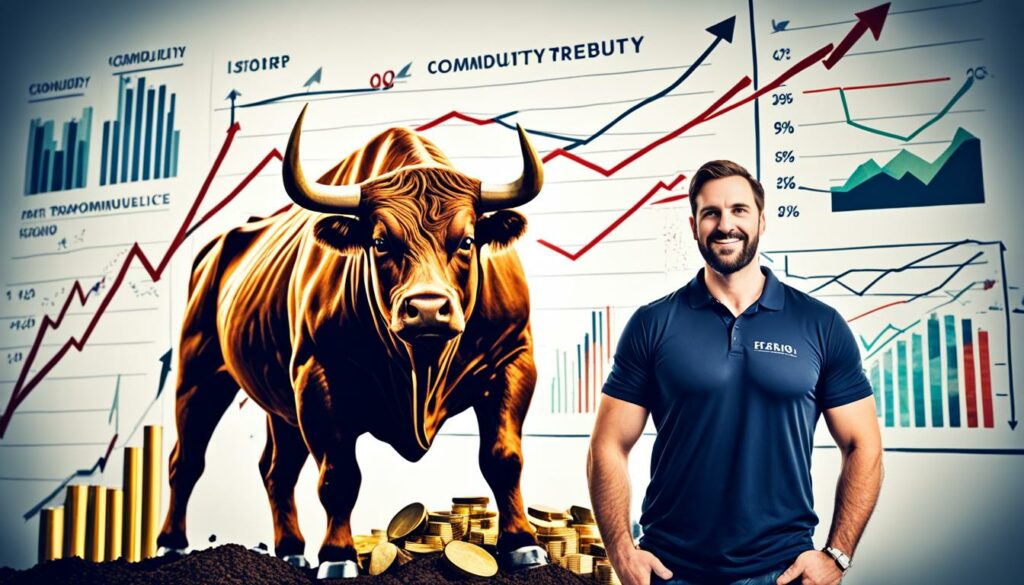
Commodity trading offers more leverage than stock trading. This means you can make bigger profits with less money upfront. For instance, buying crude oil futures needs less money than buying energy company shares. Yet, the returns can be just as high.
This strong leverage lets you manage bigger investments with a smaller budget. It’s a key advantage of commodity trading.
Investing in commodities spreads your risk. You can invest in different areas like energy, agriculture, and metals. This helps protect your money if one market fluctuates. Commodities are also very liquid. This means you can buy and sell quickly, turning assets into cash fast.
Global commodity trading makes over $20 trillion yearly. This shows how big and flexible this market is.
Here’s a table that compares commodity and stock trading:
| Factor | Commodity Trading | Stock Trading |
|---|---|---|
| Leverage | High – Allows control of larger positions with lower capital | Moderate – Typically requires substantial capital per share |
| Investment Diversification | Easy – Fewer contracts, targeted sector investments | Complex – Many stocks, broader market exposure |
| Market Liquidity | High – Quick transaction execution | Varied – Depends on stock and market conditions |
Commodities are vital for the world economy. Their prices change due to many reasons. One key factor is economic indicators like GDP growth and inflation. The demand for commodities changes as these indicators do. Now, emerging markets are also playing a big part in this. They are changing the global commodity scene.
The world’s economy affects commodity prices in big ways. When the economy grows, there’s more need for commodities in construction and manufacturing. Changes in currency values also matter a lot. A lower domestic currency means more exports and thus, higher commodity demand.
Currency changes can make imports more expensive. This can reduce the flow of commodities. The U.S. Commodity Exchange Act of 1936 highlights the need for rules in trading to handle these situations.
Countries like China and India are now huge players in the commodity market. Their demand for metals and energy is key for their growth. The Chicago Board of Trade has set standard trading practices that help these countries get what they need.
Environmental concerns are also affecting commodity markets. Now, how commodities are produced matters. Emerging economies are moving towards sustainable production. This impacts both the prices and the way commodities reach the market.
Knowing about commodity markets is very important for traders. New technology and ways to extract and move commodities are changing the market. Currency fluctuations and trade policies also have a big influence. And rules set by organisations like the Commodity Futures Trading Commission can change the game too.
| Key U.S. Commodity Exchanges | Year Established | Focus |
|---|---|---|
| Chicago Board of Trade (CBOT) | 1848 | Grain Futures |
| ICE Futures U.S. | 2007 | Diverse Commodities |
| Chicago Mercantile Exchange (CME) | 1898 | Livestock, Financial Futures |
| New York Mercantile Exchange (NYMEX) | 1872 | Energy, Metals |
It’s key to know the different roles in commodity markets for all traders. This knowledge helps them move through the market’s changes. From commodity producers to eventual users, everyone’s actions shape how the market moves.

Producers are the heart of these markets. Farmers in agriculture or mining companies in metals bring out and deliver raw materials. These are vital for many industries. Consumers, like makers and refiners, then turn these materials into products. This creates a continuous need that keeps trading going.
Speculators are very important in the market. They could be hedge funds or banks. They aim to make a profit by predicting price changes. They mostly focus on short-term plans and use a lot of technical data to make decisions.
Trading intermediaries help in making deals between producers and consumers easier. This helps the markets be more smooth and efficient. Brokerages and exchanges are examples. They make trading smooth. This helps both commodity producers and end-users better deal with their market risks.
Every player has a part to make the market work well. The stability given by producers and consumers, as well as the ready market by speculators and traders, all help. Knowing these parts is crucial for strong trading strategies.
| Participant | Role | Impact on Market |
|---|---|---|
| Producers | Extract commodities | Supply raw materials |
| Consumers | Use commodities in production | Maintain constant demand |
| Speculators | Profit from price changes | Improve market liquidity and price discovery |
| Traders | Help market transactions | Make the market more efficient |
Price discovery is the core of any marketplace. It helps us know the market prices buyers and sellers agree on. At the Chicago Mercantile Exchange (CME), traders once used hand signals to show prices. But now, electronic trading has changed this.
Many things affect how prices are discovered, like the market’s stage, type of security, and how much information is available.
Valuation, on the other hand, looks at an asset’s value based on future cash flow. The best, latest information is key to good price discovery. Unlike valuation, price discovery finds a price both buyers and sellers can agree on.
In commodity trading, finding prices is key. It sets the spot price through negotiations. Supply and demand, people’s risk levels, and how much prices change all matter.
When buyers and sellers meet in the middle, this is a fair price. Traders watch the market to spot assets that are over or undervalued. This helps them decide if they should buy or sell based on these prices.
Market transparency comes from real-time data, trade reports, and watching over trades. This is to make sure prices are fair. Governments and market bodies play a big role in keeping the market honest.
With everyone watching, the market is safer and more open. This makes trading smoother and more trusted.
EU regulators should contemplate establishing a more effective market abuse regime to prevent manipulation in both the physical and financial commodities markets. Collaborative measures with international entities can significantly contribute to boosting market transparency and restoring global confidence.
Price discovery and transparency go hand in hand. A good market needs both function well:
| Function | Importance | Key Mechanisms |
|---|---|---|
| Price Discovery | Determines market prices through buyer-seller negotiations | Real-time data, equilibrium between buyers and sellers |
| Market Transparency | Ensures fair pricing and market integrity | Trade reporting, regulatory oversight, clearinghouses |
By keeping the market clear and balanced with tight rules and up-to-date data, we ensure fairness for everyone involved in trading.
To be successful in commodity trading, one must understand the different strategies available. These range from following long-term trends to taking advantage of price differences. Traders can pick from various methods to make gains in the market.
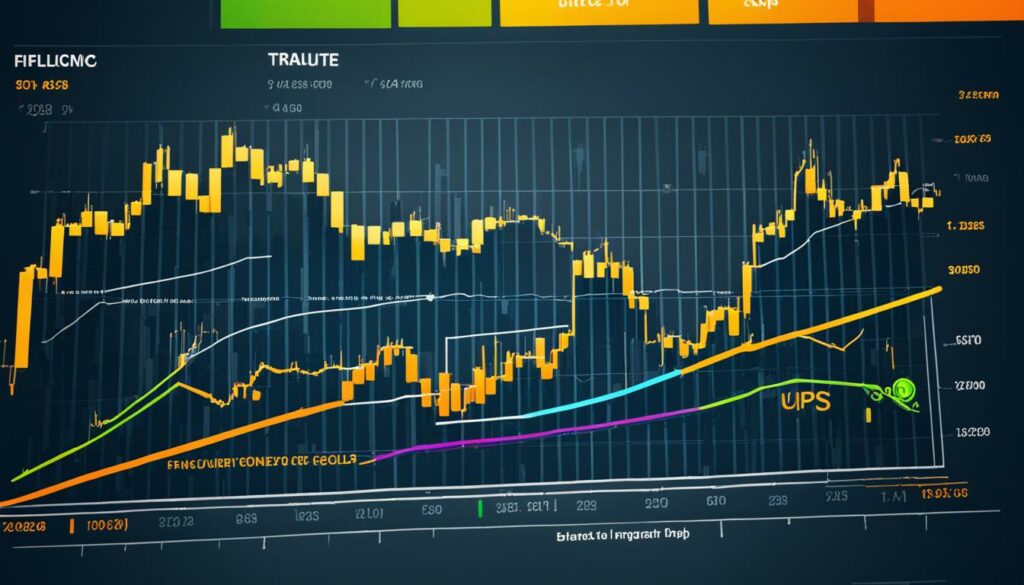
Trend Following is a key strategy for many traders. It involves monitoring market trends over long periods. By studying moving averages and technical indicators, traders spot ongoing trends. This is very effective in commodities trading, where long bull or bear markets are common. Using this method often results in better profits. Trading with the trend can improve profits by up to 180% compared to simpler strategies.
In spread trading, traders buy and sell similar commodities at the same time to profit from price differences. It’s a low-risk strategy that targets price variations between related commodities. For example, a trader might buy crude oil futures and sell gasoline futures. They would benefit from the difference in price caused by various factors like refining and demand changes.
Seasonal trading takes advantage of the knowable seasonal patterns in commodity prices. Certain commodities, like agricultural ones, see their prices change with the seasons. These changes are due to harvests and weather. Knowing these patterns can help traders predict price shifts. For instance, natural gas prices tend to rise in winter because of higher heating needs. This creates good opportunities for traders.
| Strategy | Description | Examples |
|---|---|---|
| Trend Following | Leverages sustained market movements | Bull or bear trends lasting several years |
| Spread Trading | Profits from price differentials in similar commodities | Crude oil vs petrol futures |
| Seasonal Trading | Exploits cyclical and seasonal price patterns | Natural gas in winter; agricultural harvest cycles |
For traders, knowing fundamental analysis is key for making smart choices. This method looks at the real factors that affect the markets, like supply and demand. This approach stands out because it looks at the real value of assets. It uses a mix of economic events and news to give insights. Now, let’s look closer at these important parts.
Fundamental analysis focuses a lot on supply and demand. It helps traders understand market trends deeply. Traders look into things like production slowdowns, changes in how much people buy, and how these affect the market. For example, what’s going on in the economy now and who the competition is, can change an item’s price. Looking at how much is being made helps traders predict future market changes. This way, they can find good investment chances before others do.
Events happening around the world can change markets a lot. Things like political problems, new rules, and trade deals can suddenly mix things up. As a trader, keeping up with the latest global news and economic events is crucial. This information helps you guess how these big events might change prices. This knowledge is priceless for smart investing and handling risks in uncertain markets.
Using fundamental analysis along with technical analysis make for smarter trading. Having a good understanding of economic situations, a company’s financial health, and worldly events, gives traders an edge. They can deal well with changes in the market. This can make their trades better.
Technical analysis in commodities is key for spotting price trends and trade entry points. It helps traders understand market trends and decide when to buy or sell. By looking at charts, traders can study price movements, patterns, and signs to accurately predict future prices.
Charts are vital in technical trading. They show traders price trends and market behaviour over time. Traders look for patterns like head and shoulders, and triangles to guess if a trend will continue or reverse. Through chart analysis, they can find the best times to enter a trade.
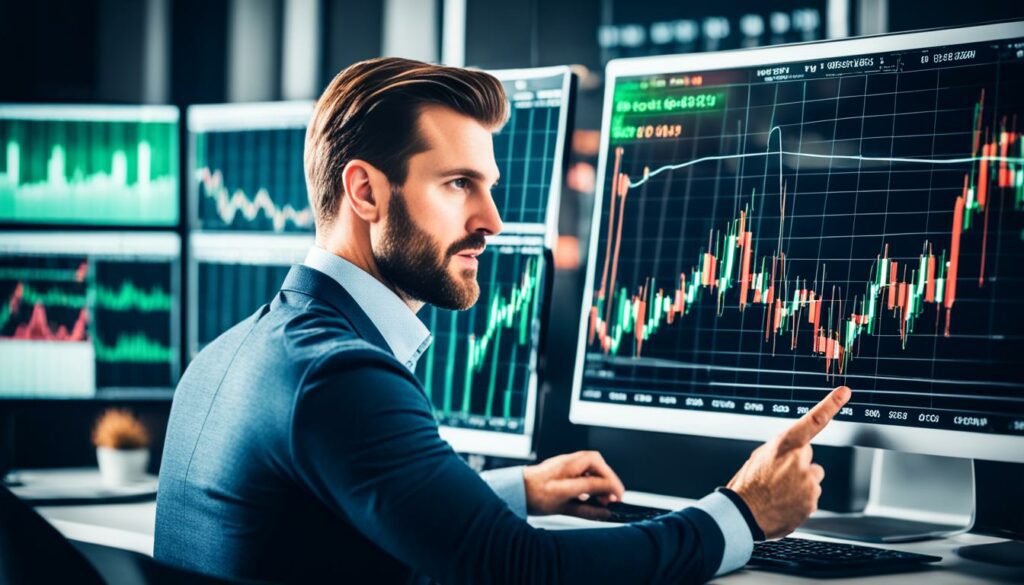
There are many important indicators in commodities trading. Moving averages smooth out price data to highlight trends over different periods. The 50-day and 200-day averages are commonly used to check if a trend is strong or weak.
The Moving Average Convergence Divergence (MACD) shows changes in a trend’s strength and direction. It points out changes in a commodity’s price trend. The Relative Strength Index (RSI) shows how fast prices are changing. It helps traders spot when the market is too high or low.
The Stochastic indicator compares a closing price to its range over time. It helps traders find when a trend might change. Bollinger Bands®, created by John Bollinger, help to measure how much the market is changing. They’re useful for spotting the best times to enter or exit a trade.
| Technical Indicators | Function |
|---|---|
| Moving Averages | Highlight trends over specific periods |
| MACD | Reveal changes in trend strength and direction |
| RSI | Identify overbought or oversold conditions |
| Stochastic Indicator | Compare closing prices to price range over a period |
| Bollinger Bands® | Measure market volatility |
Choosing the right technical indicators is crucial. Wrong signals can lead to losses. It’s important to match technical tools with current market conditions. By using these patterns and indicators, traders can make smart, informed decisions in the commodity markets.
Having the right risk management in commodity trading is key to steady returns. This is especially important in industries like energy and agriculture. These sectors can see big changes, up to 70%, in their prices in just one year. There are mainly four types of risk to look out for: price, quantity, cost, and political.
Controlling price changes in commodity trading is tough, but vital for success. The most common method used is hedging. This involves predicting global economic trends to guess price movements. For example, a shortage in the supply of metals can make their prices soar. Less strict rules in some countries can also bring risks, such as in the aluminium market. Using a mix of strategies and being aware of economic and political shifts can help handle this volatility well.
Diversification is crucial in risk management. By spreading investments across various commodities and sectors, the impact of price changes is lessened. The worldwide small manufacturing sector is a growing field that offers a good chance for diversification. VPIC Group, for instance, uses diversification and hedging to prepare for different raw material prices. This helps them keep costs steady and protects against major market changes.
Stop-loss orders are a powerful way to cut losses. These orders automatically sell a position if its price falls to a certain point. This method reduces the risk of big losses and helps traders be more disciplined. In a complete risk management plan, stop-losses act as a safety net. They make sure traders don’t face huge risks from sudden market swings.
When it comes to trading in commodities, psychology is key. Your trading decisions and how you handle your emotions play a big part. It’s crucial to control your mind just as much as learning about the market.

Keeping your trading habits in check is very important. Both fear and greed drive much of our trading behaviour. For example, too much greed can push us into risky deals. Meanwhile, fear can hold us back, stopping us from trading when we should.
This self-control stops us from making bad choices based on emotion. It helps us think logically about our trades.
Being in control of your emotions is key. There are lots of ways our minds can trick us in trading. Overconfidence might make us think we’re too good to fail. But avoiding losses at all costs, known as ‘loss aversion’, can also be a bad trap.
It’s important to understand these tricks to avoid their pitfalls. Education, staying objective, and seeking diverse opinions help. These steps can really boost how well you trade.
It’s also smart to look into behavioural finance. This field studies how our thinking patterns affect our money choices. Since the 1990s, it has given traders tips on handling these mental traps better. Setting up personal trading rules, managing risks carefully, and talking to fellow traders are all good methods. They help in staying disciplined and keeping emotional reactions in check.
| Emotional Bias | Impact on Trading |
|---|---|
| Overconfidence Bias | Leads to excessive trading and overestimating personal capabilities. |
| Loss Aversion Bias | Prioritises avoiding losses over making gains, potentially missing profitable trades. |
| Regret Aversion | Influences traders to make delayed entries, breaching trading plans and incurring losses. |
| Herd Behaviour | Results in following the crowd and moving with majority actions rather than individual analysis. |
Algorithmic trading strategies have changed how we trade in financial markets today. They use advanced algorithms and sometimes artificial intelligence. This lets them trade with more precision, speed, and efficiency than humans can.
There are many benefits to algorithmic trading, including its speed. High-frequency trading systems can make trades in microseconds or even nanoseconds. This fast trading helps execute large orders without affecting market prices too much.
It’s also very precise and consistent. Automated trading systems don’t make human errors and follow set strategies. This helps make trading reliable for big investors who need to buy a lot of stock without moving prices much.
These systems also boost liquidity and help various market players. Algorithms are used for strategies like arbitrage and index fund rebalancing. This shows how versatile and useful these systems are.
To start using automated trading systems, you need to create the algorithms. They can use strategies like following trends, reverting to the mean, or trading without taking sides. Each aims to find opportunities in different market situations.
After creating the algorithm, it must be tested with historical data to check if it works and can make a profit. Luckily, there are about 100 free tested trading strategies for traders to use and adjust to fit their needs.
Finally, you put your system to work in the live market. The main aim is to trade more efficiently. This includes monitoring and adjusting in real time to match the market’s movements. Techniques like using the VWAP help make sure that trades are done at the best prices.
Overall, using automated and algorithmic trading can give traders and institutions a big edge. They provide unmatched efficiency, precision, and potential for profit.
| Strategy Type | Description | Benefits |
|---|---|---|
| Trend Following | Utilises moving averages and technical indicators to capture market trends. | Consistent profit from long-term market movements. |
| Arbitrage | Exploits price differentials between markets or instruments. | Low risk and immediate profit potential. |
| Mean Reversion | Capitalises on temporary deviations from average price levels. | Predictable returns as prices revert to the mean. |
| Delta-Neutral | Maintains a neutral market position using offsetting options trades. | Reduced risk from market volatility. |
| VWAP | Breaks large orders into smaller trades executed at the VWAP. | Minimises market impact and trading costs. |
Commodity futures trading is key in modern finance. It lets people guess and protect themselves against future price changes in things like gold and oil. Unlike regular stock trading, futures contracts trading needs a small upfront payment. This makes it easier for more people to try and make money.
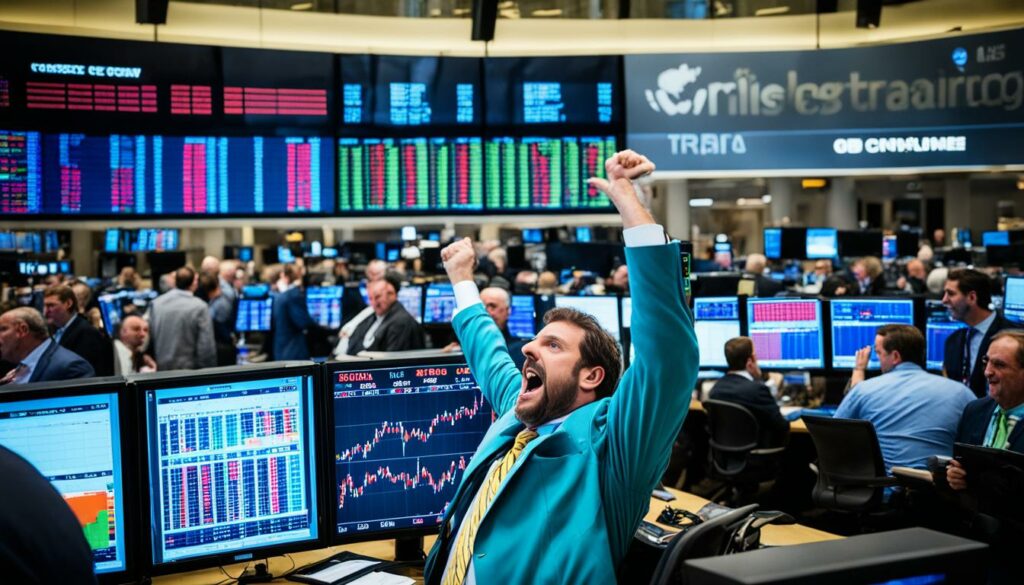
A futures contract is like a deal to buy or sell something at a set price in the future. It lets people guard against wild price swings. Sometimes, even a small rise in prices can lead to big profits. This is especially true in futures trading where you don’t need to invest as much as in stocks.
Commodity futures strategies help spread out investments wisely. They are often more straightforward than picking stocks. Instead of choosing from many stocks, people might focus on just a few commodity contracts. This makes it easier to invest in specific areas of the economy.
A key to success in futures trading is to use the right techniques. Following market trends is one powerful option. Some commodities stay on a rise or fall for a long time. Taking advantage of these trends can lead to much higher profits than just a basic approach.
If you base your trades on big economic changes or specific events, it’s called fundamental trading. Predicting big shifts in prices can be very profitable. Traders can also look for opportunities when prices sharply change from their usual trends.
For those who prefer lower risks, spread trading could be a good fit. This method involves trading in different, but similar, commodities at the same time. It aims to make money off the difference in their prices. It also requires less money upfront compared to other trading methods, making it safer for some traders.
Being an expert in a single commodity can also lead to steady success. This focus allows for in-depth study and potentially better trade decisions. Traders might choose to look at long-term price movements or use patterns to predict when to buy or sell. This kind of specialisation can boost profits in the futures market.
Continuous learning is crucial in the world of commodity trading. The market keeps changing because of global economics, new technology, and geopolitical issues. To keep up, traders need to learn all the time to improve their skills and adjust their tactics.
Being up-to-date with the latest news is key in trading commodities well. Understanding new economic signs, law changes, or the latest tech can change market conditions. Traders who are good at listening can pick up important information, ask the right questions, and find solutions that work for clients. This helps them stay ahead.
Being able to change and adapt is crucial for success in commodity trading. Traders need to tweak their strategies when the market or client needs shift. Using both technical analysis and fundamental analysis are great ways to do this. These methods help traders spot trends and understand what affects supply and demand. Programs with mentors and practice accounts can also teach useful skills.
In short, always learning, keeping up-to-date with the market, and changing strategies are vital for lasting success in commodity trading. This not only helps traders handle risks better but also builds strong relationships with clients. This leads to success in an exciting yet unpredictable area of business.
Commodity trading means buying and selling raw materials or their future contracts. These can be things like food, energy, metals, and more. It’s a way for people to make money from price changes without actually having the item.
Many things are traded in this market. This includes food like wheat and coffee, energy items like oil, metals such as gold, and soft goods like cocoa and sugar.
Trading commodities offers big chances for growth and is easy to spread out your investments. You can bet on prices going up or down. Also, short selling and going long are both simple to do.
Big economy numbers and money changes have a big effect on prices. So do growing markets, protecting the Earth, and tech advancements. These all change how much people want to buy and sell.
Many different groups take part in these markets. From the ones making the goods, to those using them, and even people who guess on prices. This mix keeps things moving and the prices fair.
Prices are decided by who wants to buy and how much is available. Open facts, reports, and rules help keep it all fair. Places to store goods safely also play a part in making sure prices make sense.
Good plans include following trends, trading in spreads, and watching for seasonal patterns. By keeping an eye on these, traders can make smarter choices and win more often.
This looks at what makes prices go up or down. By studying these, traders get clues to make better moves. It helps them understand the market better.
Technical study uses charts and more to spot trends and chances. It’s about looking for the right time to buy or sell. This helps make trading decisions clearer.
Managing risk means being careful with how much you invest, spreading out your bets, and knowing when to stop a bad deal. Being smart about these things helps keep losses small.
How you think and feel can change your trades’ results. Sticking to a plan and staying cool under pressure are key. This is what makes some traders more successful than others.
Algorithm trading is fast and precise because it uses computer programs. These programs can handle complex strategies better than most people. They give traders an edge by acting quickly.
Futures trading means making deals now for goods that’ll be sold or bought later. It’s good for both protecting your investments and trying to guess the market’s direction. Knowing the details and having a strong analysis can lead to success.
The market is always changing. To keep up, traders must always learn about new tech, current news, and the global economy. Learning non-stop means being ready for whatever the market brings.